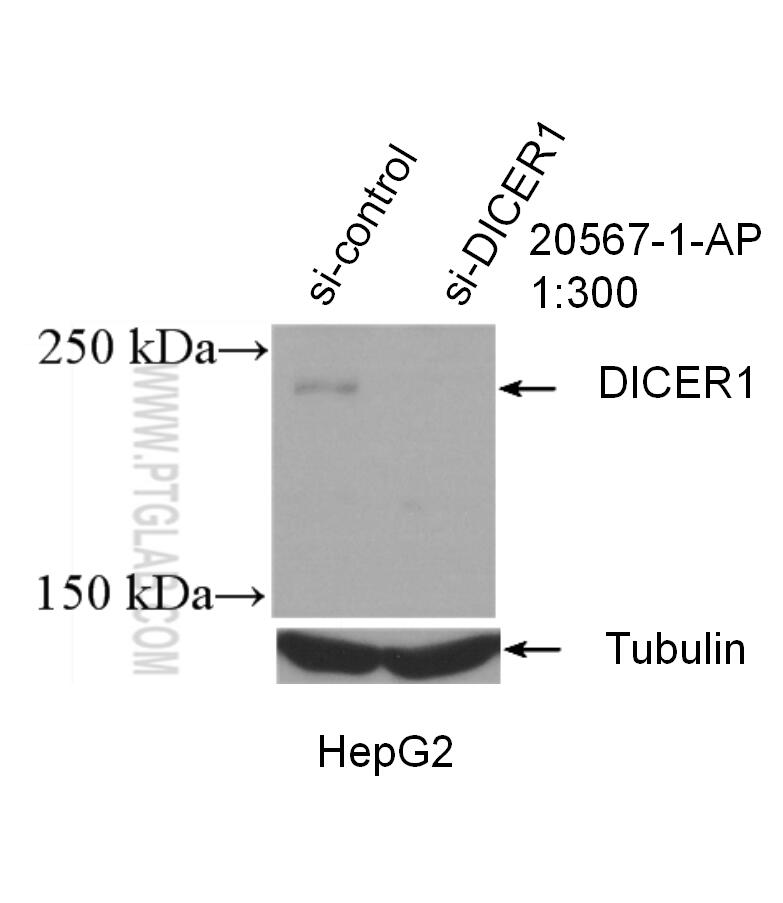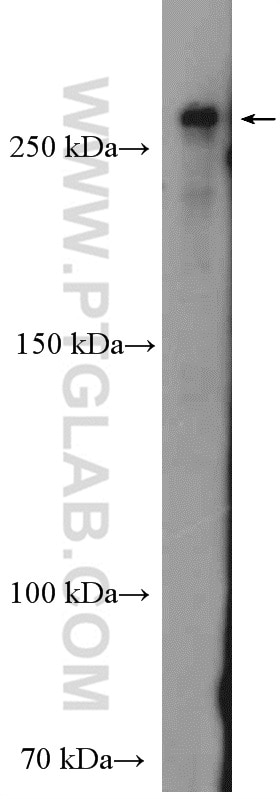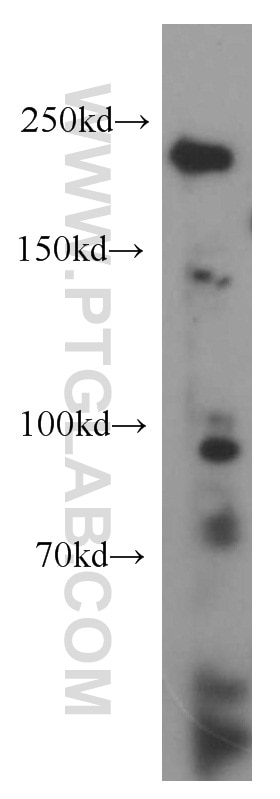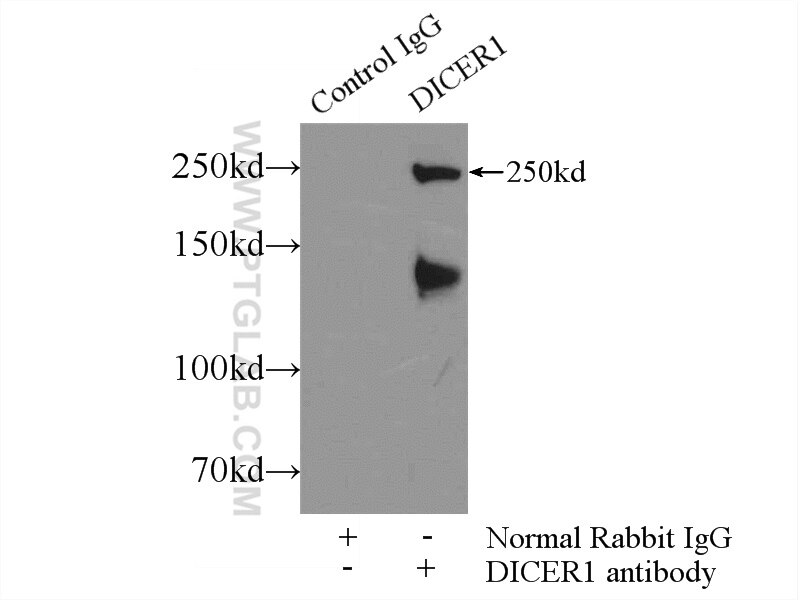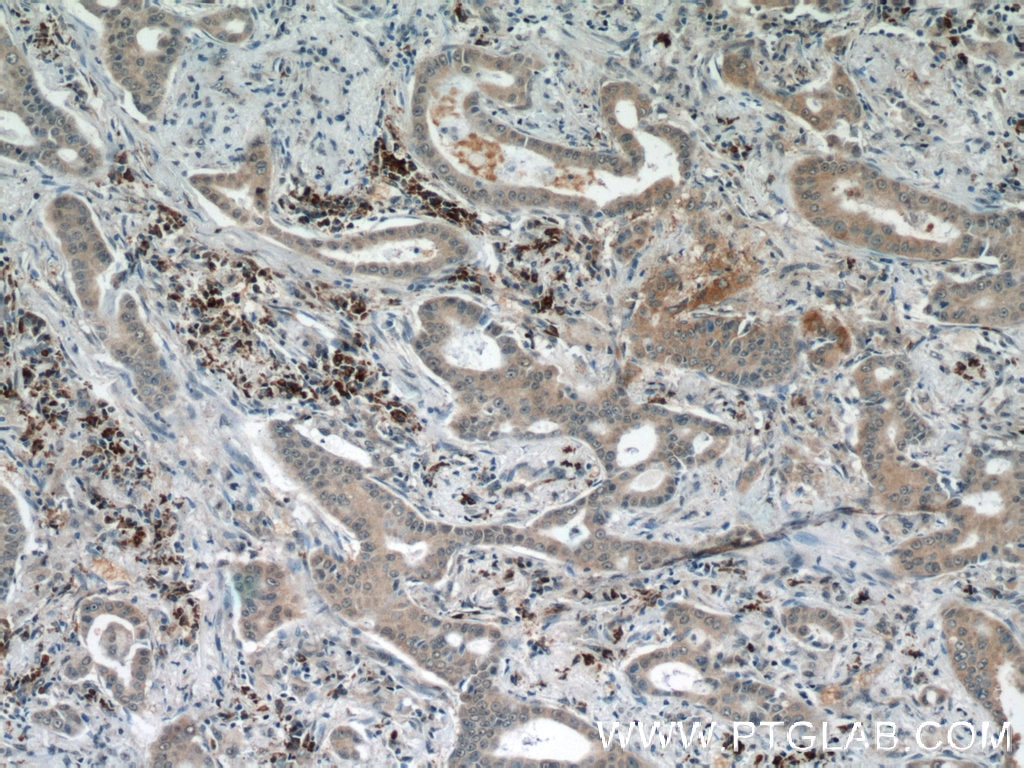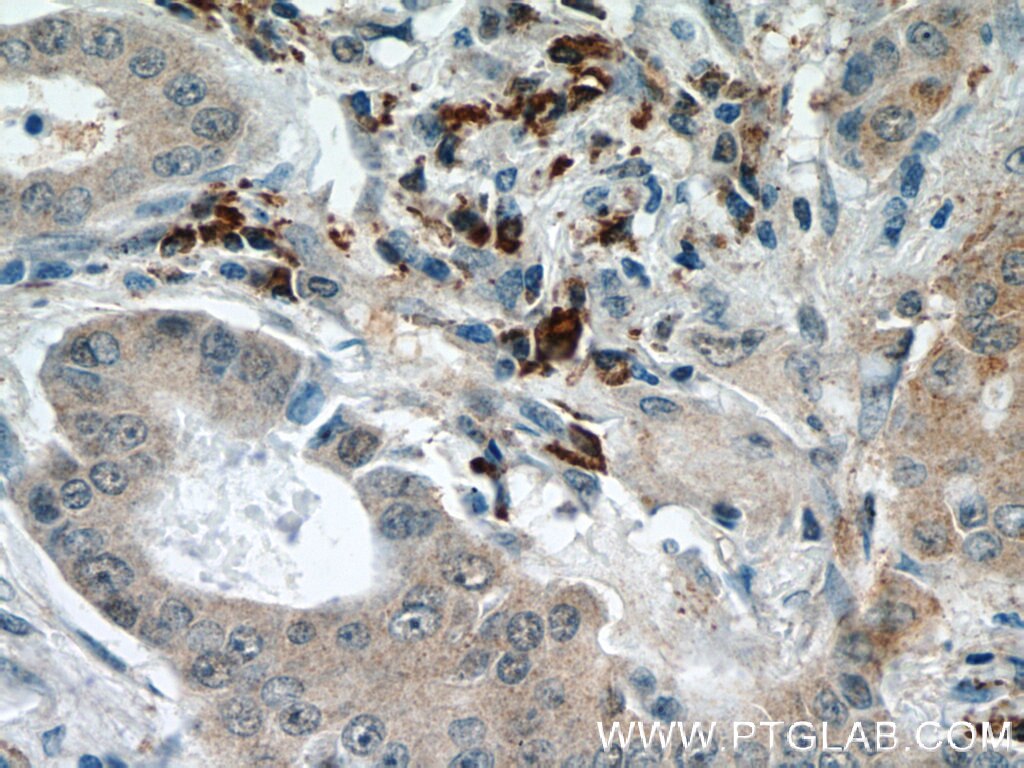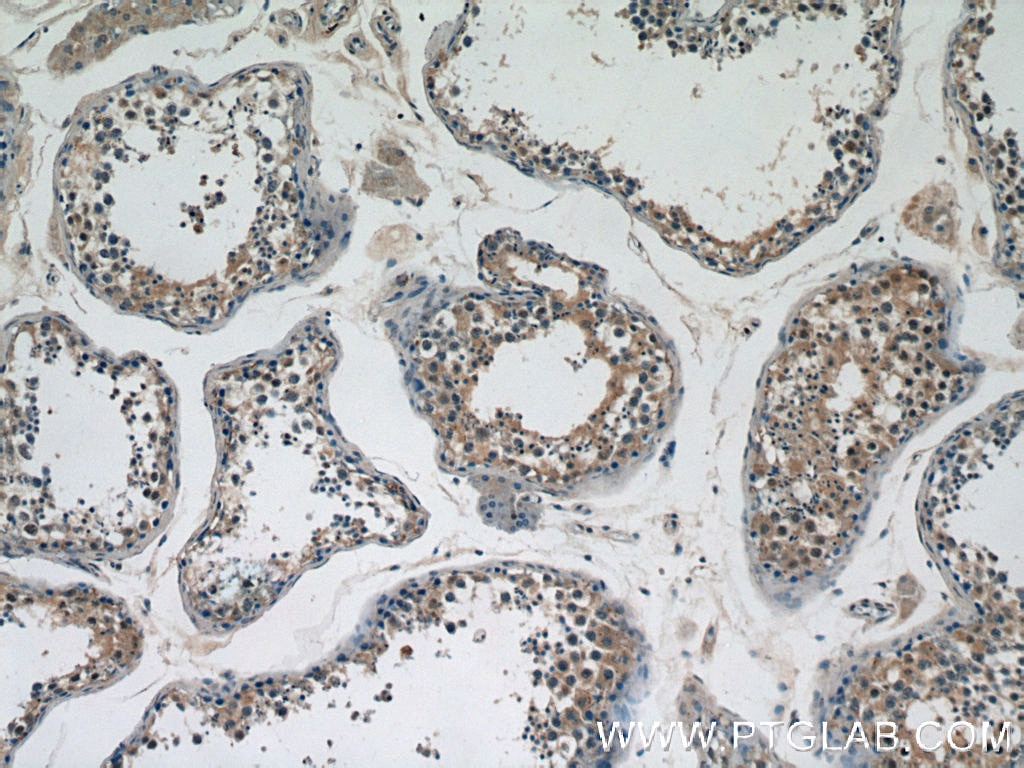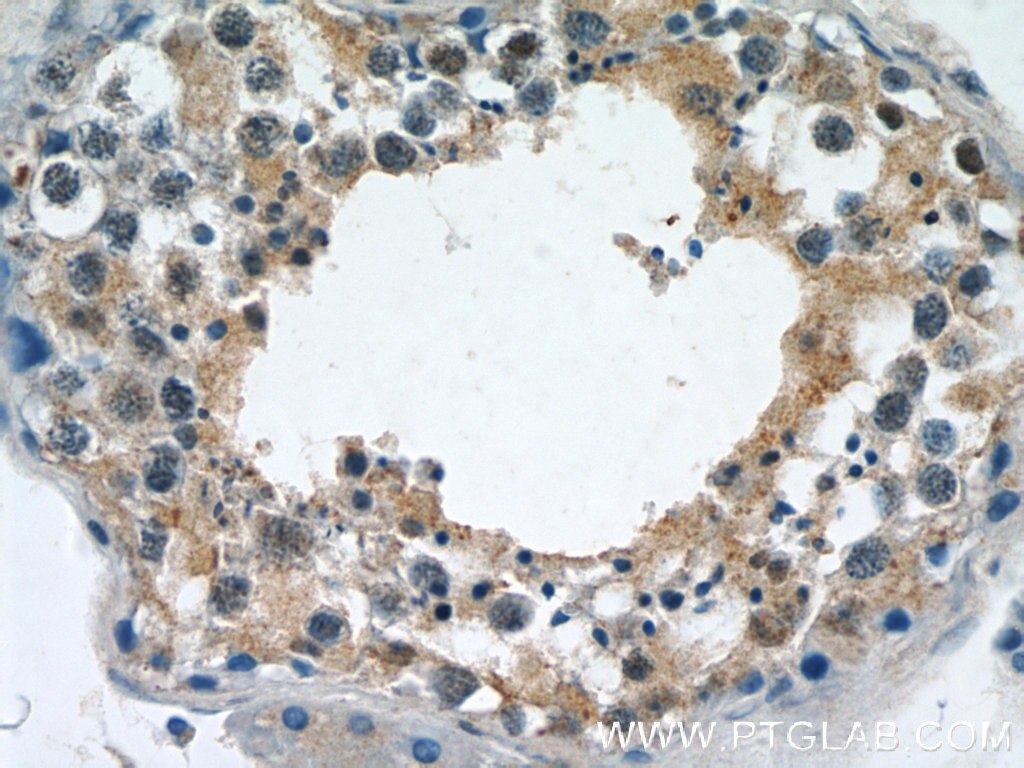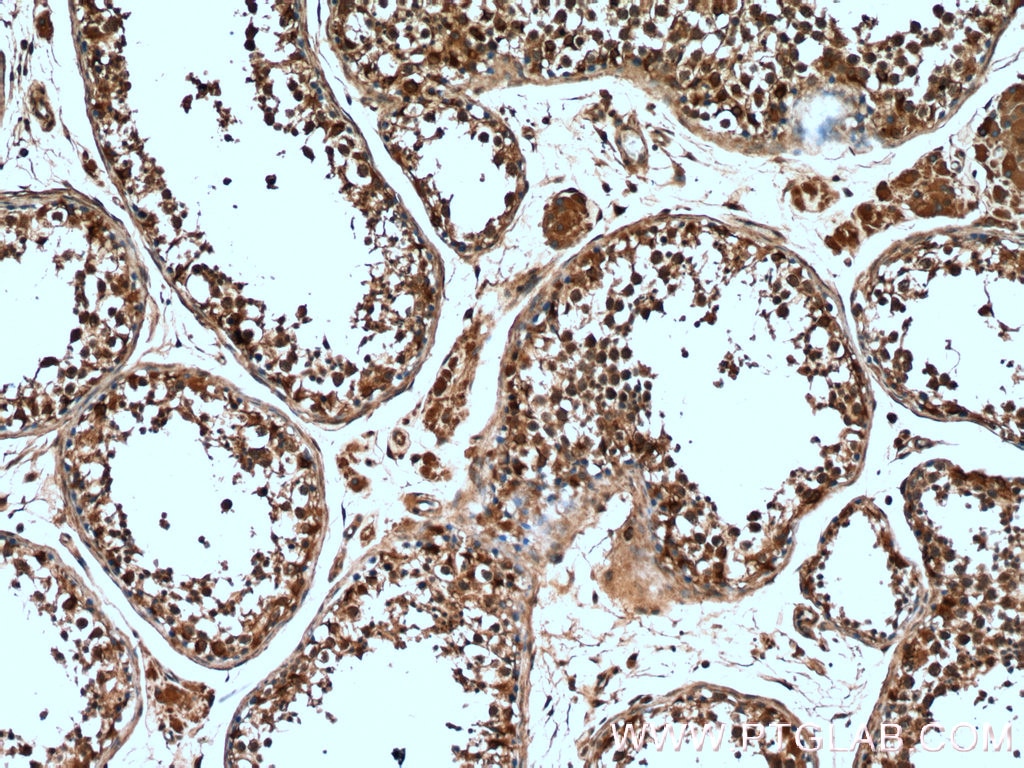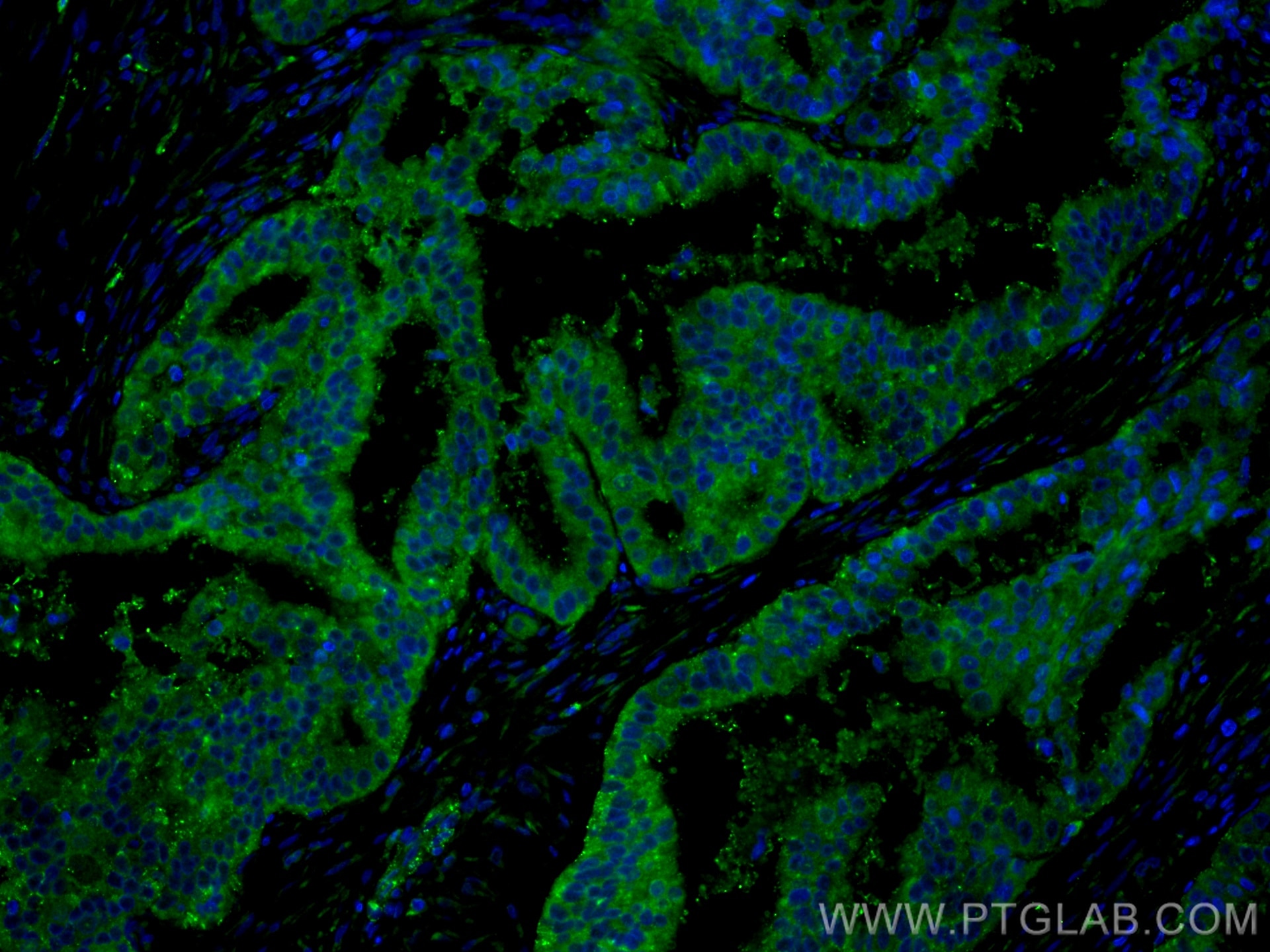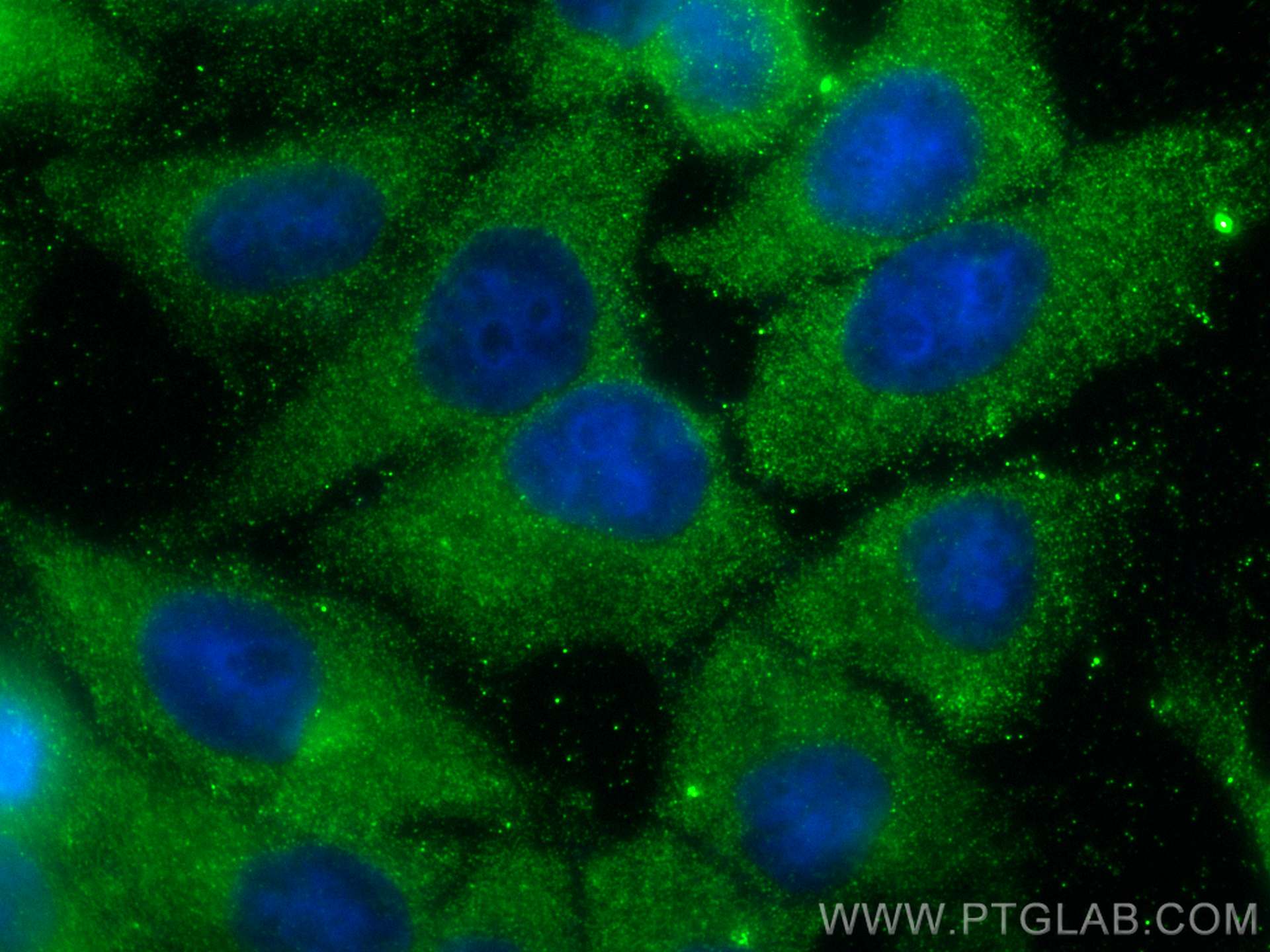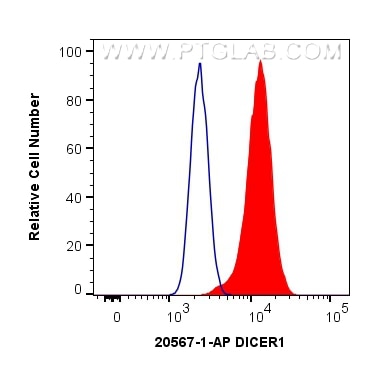Tested Applications
| Positive WB detected in | HeLa cells, K-562 cells, HepG2 cells |
| Positive IP detected in | Jurkat cells |
| Positive IHC detected in | human testis tissue, human lung cancer tissue Note: suggested antigen retrieval with TE buffer pH 9.0; (*) Alternatively, antigen retrieval may be performed with citrate buffer pH 6.0 |
| Positive IF-P detected in | human ovary tumor tissue |
| Positive IF/ICC detected in | HepG2 cells |
| Positive FC (Intra) detected in | HepG2 cells |
Recommended dilution
| Application | Dilution |
|---|---|
| Western Blot (WB) | WB : 1:200-1:1000 |
| Immunoprecipitation (IP) | IP : 0.5-4.0 ug for 1.0-3.0 mg of total protein lysate |
| Immunohistochemistry (IHC) | IHC : 1:50-1:500 |
| Immunofluorescence (IF)-P | IF-P : 1:50-1:500 |
| Immunofluorescence (IF)/ICC | IF/ICC : 1:200-1:800 |
| Flow Cytometry (FC) (INTRA) | FC (INTRA) : 0.40 ug per 10^6 cells in a 100 µl suspension |
| It is recommended that this reagent should be titrated in each testing system to obtain optimal results. | |
| Sample-dependent, Check data in validation data gallery. | |
Published Applications
| KD/KO | See 2 publications below |
| WB | See 22 publications below |
| IHC | See 1 publications below |
| IF | See 3 publications below |
| IP | See 2 publications below |
Product Information
20567-1-AP targets DICER1 in WB, IHC, IF/ICC, IF-P, FC (Intra), IP, ELISA applications and shows reactivity with human samples.
| Tested Reactivity | human |
| Cited Reactivity | human |
| Host / Isotype | Rabbit / IgG |
| Class | Polyclonal |
| Type | Antibody |
| Immunogen |
Peptide Predict reactive species |
| Full Name | dicer 1, ribonuclease type III |
| Calculated Molecular Weight | 219 kDa |
| Observed Molecular Weight | 220-250 kDa, 90 kDa |
| GenBank Accession Number | NM_030621 |
| Gene Symbol | DICER1 |
| Gene ID (NCBI) | 23405 |
| RRID | AB_10694287 |
| Conjugate | Unconjugated |
| Form | Liquid |
| Purification Method | Antigen affinity purification |
| UNIPROT ID | Q9UPY3 |
| Storage Buffer | PBS with 0.02% sodium azide and 50% glycerol, pH 7.3. |
| Storage Conditions | Store at -20°C. Stable for one year after shipment. Aliquoting is unnecessary for -20oC storage. 20ul sizes contain 0.1% BSA. |
Background Information
DICER1, also named as DICER, HERNA and KIAA0928, belongs to the helicase family and Dicer subfamily. It is required for formation of the RNA induced silencing complex (RISC). DICER1 is a component of the RISC loading complex (RLC), also known as the micro-RNA (miRNA) loading complex (miRLC), which is composed of DICER1, EIF2C2/AGO2 and TARBP2. Within the RLC/miRLC, DICER1 and TARBP2 are required to process precursor miRNAs (pre-miRNAs) to mature miRNAs and then load them onto EIF2C2/AGO2. EIF2C2/AGO2 bound to the mature miRNA constitutes the minimal RISC and may subsequently dissociate from DICER1 and TARBP2. DICER1 cleaves double-stranded RNA to produce short interfering RNAs (siRNAs) which target the selective destruction of complementary RNAs. The antibody is specific to DICER1. The calcualted molecular weight of DICER1 is 219 kDa, but modified DICER1 is about 220-250 kDa. DICER1 exists some isoforms with molecular weight 219 kDa and 93 kDa.
Protocols
| Product Specific Protocols | |
|---|---|
| IF protocol for DICER1 antibody 20567-1-AP | Download protocol |
| IHC protocol for DICER1 antibody 20567-1-AP | Download protocol |
| IP protocol for DICER1 antibody 20567-1-AP | Download protocol |
| WB protocol for DICER1 antibody 20567-1-AP | Download protocol |
| Standard Protocols | |
|---|---|
| Click here to view our Standard Protocols |
Publications
| Species | Application | Title |
|---|---|---|
Neuron Astrocytic ApoE reprograms neuronal cholesterol metabolism and histone-acetylation-mediated memory.
| ||
Nat Chem Biol Differential roles of human PUS10 in miRNA processing and tRNA pseudouridylation. | ||
Nat Commun RNA structure probing reveals the structural basis of Dicer binding and cleavage. | ||
Nucleic Acids Res HSP90 and Aha1 modulate microRNA maturation through promoting the folding of Dicer1. | ||
Nat Commun Long non-coding RNA GAS5 controls human embryonic stem cell self-renewal by maintaining NODAL signalling. | ||
J Pathol Cancer-associated somatic DICER1 hotspot mutations cause defective miRNA processing and reverse-strand expression bias to predominantly mature 3p strands through loss of 5p strand cleavage.
|

